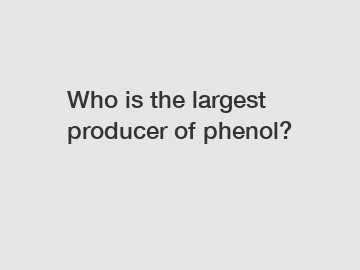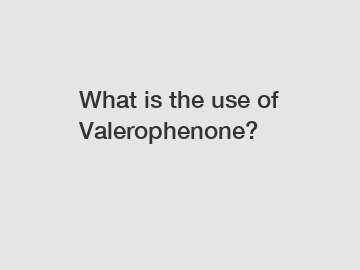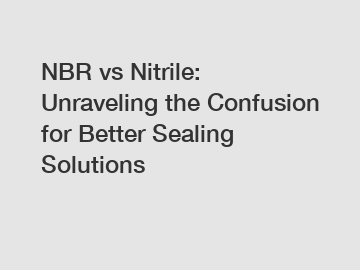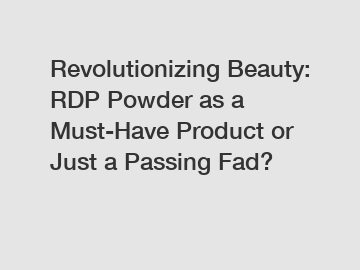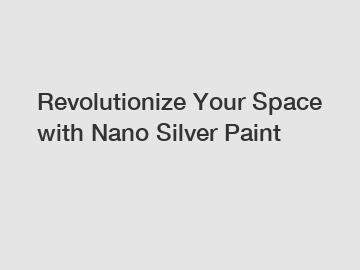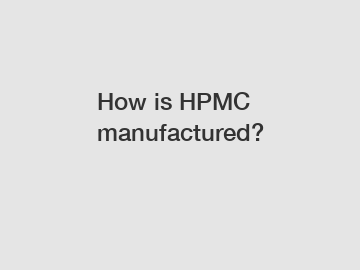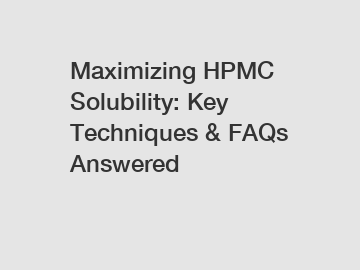What are the top 10 biodegradable resins for sustainable packaging that businesses should consider?
Goto HW to know more.
Sustainable packaging has become a critical element in combating environmental degradation caused by plastic waste. As businesses strive to adopt eco-friendly practices, biodegradable resins offer a promising solution. In this article, we will explore the top 10 biodegradable resins that businesses should consider for sustainable packaging.
1. PLA (Polylactic Acid).
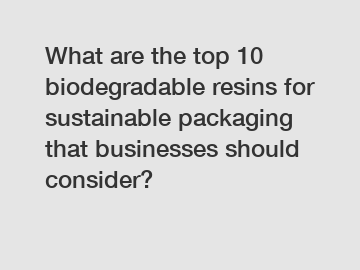
Derived from renewable resources such as corn starch or sugarcane, PLA is one of the most widely used biodegradable resins. It has gained popularity due to its versatility, strength, and compostability. PLA can be easily transformed into various forms such as films, containers, and cutlery, making it an excellent choice for sustainable packaging.
2. PBAT (Polybutylene adipate terephthalate).
PBAT is a biodegradable copolymer that combines aliphatic polyesters and terephthalic acid. This resin offers excellent flexibility and durability, making it suitable for manufacturing packaging films and bags that can be composted. PBAT's ability to degrade in both industrial and home composting environments makes it an attractive choice for businesses looking to reduce their environmental footprint.
3. PHA (Polyhydroxyalkanoates).
PHA is a group of biodegradable polyesters produced by bacteria through fermentation. It possesses similar characteristics to traditional plastics but degrades naturally in various environments, including soil, water, and marine conditions. PHA has a wide range of applications, including packaging films, containers, and disposable cutlery.
4. PCL (Polycaprolactone).
PCL is a biodegradable polyester that has gained attention for its remarkable melting point, low toxicity, and ability to blend with other resins. It offers excellent flexibility and can be easily molded into various shapes, making it ideal for packaging applications such as cushioning, foam, and films. PCL is also known for its biocompatibility, enabling its use in biomedical and pharmaceutical packaging.
5. PBS (Polybutylene succinate).
PBS is a bio-based and biodegradable polymer derived from succinic acid and 1,4-butanediol. It exhibits excellent resistance to heat and moisture, making it suitable for packaging products that require stability and durability. PBS can be processed into films, trays, and containers, and it breaks down into natural elements when decomposed, leaving a minimal environmental footprint.
6. Starch Blends.
Related links:What is the difference between HPMC and hemc?
Ultimate Guide to Using Iron Oxide Powder for Stunning Concrete Designs
Understanding the Importance of Boron Trifluoride Specialty Gas
Why are compostable bags not allowed?
The Ultimate Guide to Industrial Acetylene Gas
What is the best and easiest flooring to install?
What is CAS 52190 28 0 used for?
Starch-based bioplastics, often combined with other biodegradable materials, offer an affordable and sustainable option for packaging. These blends utilize corn, potato, or tapioca starch as the main component, making them compostable and renewable. Starch blends can be molded into various packaging forms, including containers, trays, and foamed packaging.
7. PHBV (Poly(3-hydroxybutyrate-co-3-hydroxyvalerate)).
PHBV is a biodegradable polymer that exhibits excellent barrier properties, providing an effective solution for packaging perishable goods. Derived from bacterial fermentation, it can replace traditional polymers in applications requiring high stiffness and gas barrier properties. PHBV can be processed into films, coatings, and thermoformed packaging.
8. PTT (Polytrimethylene terephthalate).
PTT is a bio-based polyester that offers superior mechanical properties and good resistance to chemicals and UV light. It can be processed into fibers, films, and bottles, making it suitable for various packaging applications. PTT's biodegradability ensures that it does not contribute to long-term environmental pollution.
9. PHF (Polyhydroxyalkanoate-Flax Fiber Biocomposites).
PHF combines biopolymers, such as PHA, with flax fibers to create biodegradable composites suitable for packaging applications. These composites offer enhanced strength and superior barrier properties. PHF-based materials are commonly used in the production of packaging films, trays, and bottles, providing a sustainable alternative to traditional plastic packaging.
10. EVOH (Ethylene Vinyl Alcohol).
While not biodegradable itself, EVOH is a copolymer that possesses excellent barrier properties, reducing the need for additional layers of packaging materials in certain applications. When combined with other biodegradable resins, such as PLA or PBAT, it creates a multi-layer structure that enhances the overall sustainability of the packaging. EVOH-based packaging is commonly used for food products, ensuring extended shelf life and freshness.
Conclusion.
Sustainable packaging is a growing imperative for businesses aiming to minimize their environmental impact. The top 10 biodegradable resins explored in this article offer a range of options for sustainable packaging solutions, from PLA and PBAT to PHA and PHBV. By incorporating these biodegradable resins into their packaging strategies, businesses can take significant steps towards achieving a more eco-friendly and sustainable future.
For more information, please visit our website.
The company is the world’s best biodegradable starch resin supplier. We are your one-stop shop for all needs. Our staff are highly-specialized and will help you find the product you need.
Related links:What is the ratio of SBR to latex?
Are slip-resistant HPMC coatings really effective?
What is the cost of HPMC?
Top 5 Best Places to Buy Magnesium Oxide
How do you dissolve HPMC?
How can Ferric Oxide Orange revolutionize fashion?
Ultimate Guide to What's Compostable: Answering Your Burning Questions




